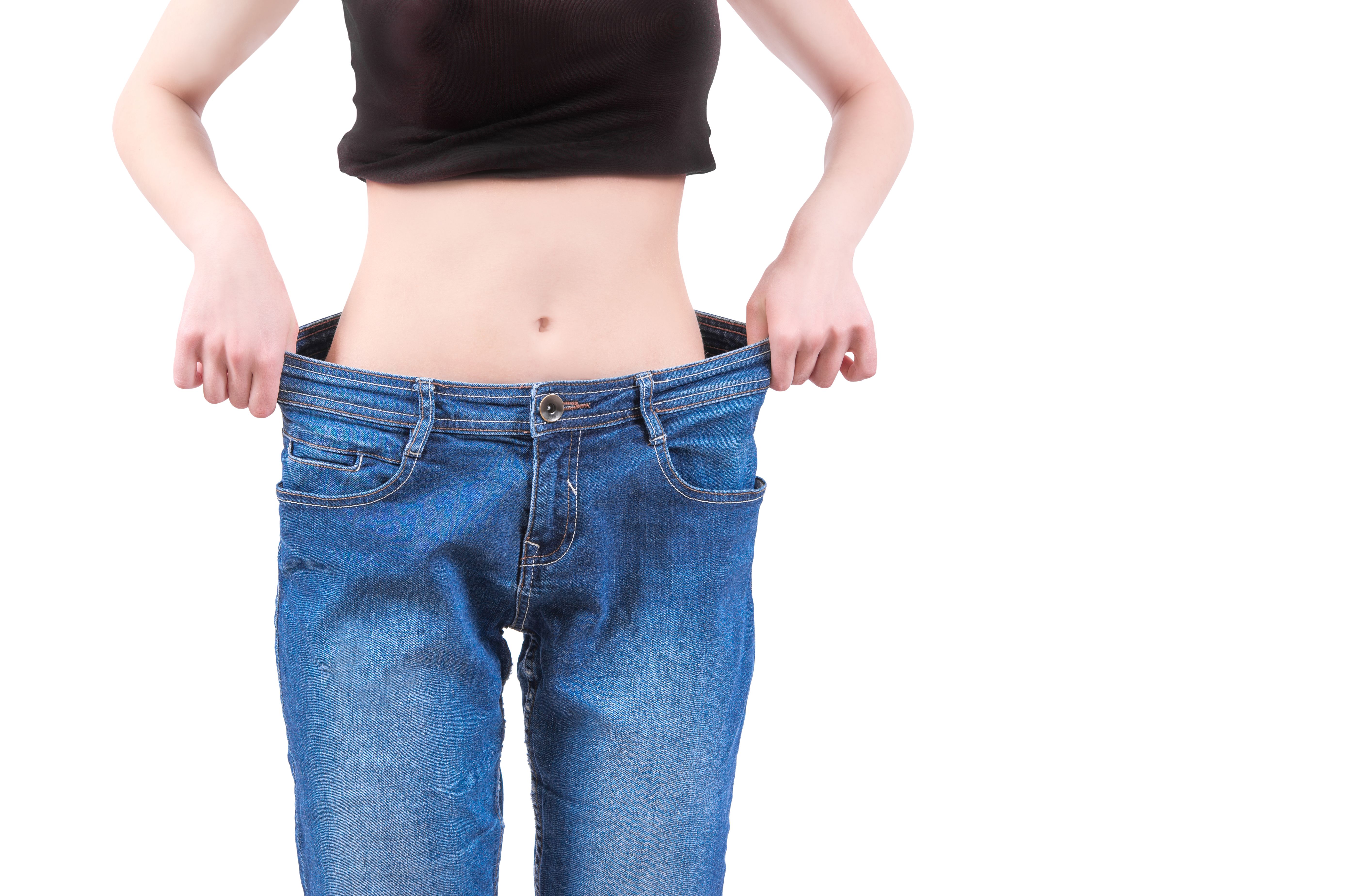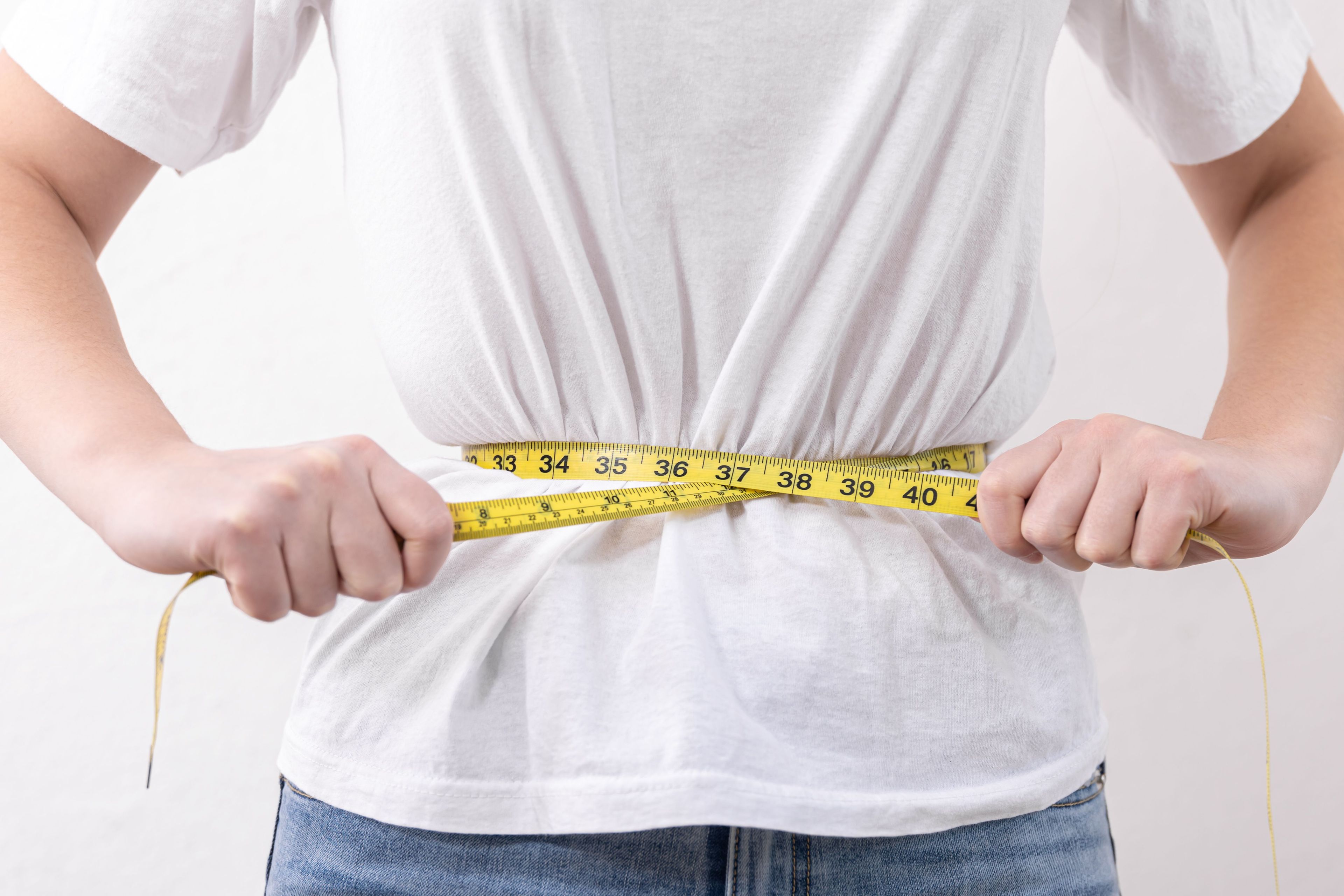When dealing with a painful disc, one question arises: Can a herniated disc cause weight loss? The answer isn’t straightforward. While herniated discs do not directly cause weight loss, the lifestyle adjustments and emotional stressors associated with chronic pain may contribute to changes in body weight.
In this article, we’ll explore how spinal health and weight interact, what to expect with a herniated disc, and, most importantly, the most effective way to treat disc injuries and reclaim a pain-free, active life.
Weight Loss with a Herniated Disc?
A herniated disc itself does not lead to weight loss. However, some people with chronic discogenic pain may experience unintended changes in body weight as a secondary effect.
Pain, inflammation, and immobility can disrupt daily routines, leading to decreased appetite, reduced physical activity, or muscle deconditioning. These lifestyle alterations, if sustained, may contribute to lean body mass loss.
Chronic pain has a significant emotional component. Depression, anxiety, and stress-induced appetite changes may all affect nutritional intake or cause fluctuations in weight. Still, it's important to understand that weight loss is not a hallmark symptom of a herniated disc, nor is it expected in most cases.
Our findings show that the most common symptoms of herniated discs include localized back or neck pain, leg or arm pain (radiculopathy), numbness, tingling, and muscle weakness, not weight changes.
Why Your Weight Still Matters?
While weight loss isn’t a symptom, your overall body weight does play a critical role in spinal health. Carrying excess weight places additional mechanical stress on spinal discs in the lumbar spine (lower back). This increased load can accelerate disc degeneration and make existing disc injuries worse.
Maintaining a healthy weight supports recovery and reduces inflammation. A balanced diet combined with low-impact, spine-safe exercises like walking or swimming helps strengthen core muscles and alleviates pressure on damaged discs.
Understanding Herniated Discs
What Is A Herniated Disc?
A herniated disc is a type of disc degeneration. It begins with a posterior annular tear, which allows disc fragments to escape and inflame surrounding tissue. This is the true source of pain, not nerve compression.
This herniation can irritate nearby spinal nerve roots, leading to secondary symptoms like shooting pain, numbness, or weakness in the extremities.
Most herniated discs occur in the lower back (lumbar spine) but can also develop in the cervical (neck) or thoracic (mid-back) spine. The injury usually stems from trauma, poor lifting mechanics, or age-related degeneration that weakens the disc structure over time.

Common Symptoms Of A Herniated Disc
Symptoms vary depending on the location of the disc herniation and the nerves involved. These may include:
- Localized pain in the back or neck.
- Radiating pain down one leg (sciatica) or one arm.
- Muscle weakness or fatigue.
- Numbness or tingling in the extremities.
- Difficulty walking or sitting for extended periods.
In rare and severe cases, a herniated disc may compress nerves that control bladder or bowel function. This is a medical emergency called cauda equina syndrome and requires immediate care.
What Causes Herniated Discs?
Disc herniation typically results from annular tears, which may develop due to:
- Traumatic injury.
- Improper lifting or twisting.
- Repetitive motion or strain.
- Disc degeneration from aging.
Risk factors include obesity, smoking, and a sedentary lifestyle. Some individuals may also have a genetic predisposition to weaker spinal discs.
Our research indicates that 85% of all chronic back and neck pain originates from disc injuries.
Diagnosing A Herniated Disc
At Deuk Spine Institute, a diagnosis begins with a comprehensive physical exam to identify pain generators with 99% accuracy. While MRI scans can reveal disc abnormalities, they do not confirm the source of pain on their own. As Dr. Ara Deukmedjian states, “MRI scans don’t tell you where pain comes from; patients do.”
At Deuk Spine Institute, a diagnosis begins with a comprehensive physical exam to identify pain generators with 99% accuracy. While MRI scans can reveal disc abnormalities, they do not confirm the source of pain on their own. As Dr. Ara Deukmedjian states, “MRI scans don’t tell you where pain comes from; patients do.”
Tools used for diagnosis include:
- MRI scans: to visualize disc structure.
- Deuk Spine Exam: a proprietary exam to map exact pain sources.
- Free MRI Review: available to new patients remotely.
Can Herniated Discs Be Prevented?
Not all disc injuries are preventable, but you can lower your risk by:
- Maintaining a healthy body weight.
- Practicing proper posture and lifting techniques.
- Staying active with spine-safe exercises.
- Avoiding smoking.
- Using ergonomic seating and bedding.
In individuals with previous disc herniations, early intervention and core strengthening can help prevent recurrence.
The Most Effective Treatment For Herniated Discs
While many traditional treatment options exist for herniated discs, ranging from physical therapy to injections and surgery, not all approaches provide long-term relief or address the root cause of pain. Many offer only temporary symptom management and can carry risks of complications or recurring issues.
Let’s take a closer look at these options and how they compare to Deuk Spine Institute’s revolutionary treatment.
Traditional Treatments
1. Steroid Injections
Epidural or facet joint injections may provide short-term relief by reducing inflammation, but they do not repair disc injuries. Multiple injections can also weaken nearby tissues and increase the risk of infection.
2. Physical Therapy
Similar to answering “Can you massage a bulging disc back into place?” While PT can strengthen the back and improve mobility, it cannot heal a torn annulus fibrosus or remove herniated disc fragments. In fact, some movements can worsen symptoms if the disc injury is not properly diagnosed.

3. Opioids And Anti-Inflammatories
Deuk Spine strongly warns against opioids. These drugs do not cure spine conditions and carry serious risks, including addiction, overdose, and masking of symptoms that delay appropriate care.

4. Microdiscectomy & Spinal Fusion
These invasive surgeries involve removing portions of the disc or fusing vertebrae, leading to:
- Scar tissue.
- Loss of spinal mobility.
- Increased risk of adjacent segment disease.
- High rates of Failed Back Surgery Syndrome (FBSS).
Complication rates for cervical fusions can be as high as 48%, while success rates for pain relief remain low.

The Deuk Laser Disc Repair® Advantage
At Deuk Spine Institute, the gold standard for treating herniated discs is Deuk Laser Disc Repair, a minimally invasive, outpatient surgery that precisely targets and removes inflamed disc material while leaving surrounding muscles, joints, and bones untouched.
How It Works:
- A 7mm incision is made under anesthesia.
- A thin tube is inserted into the disc space via the natural opening.
- A high-precision endoscopic laser removes herniated nucleus pulposus fragments and debrides inflamed tissue.
- The tear is sealed, allowing natural healing of the disc.
- The procedure takes about 60 minutes.
- No hospitalization or opioids are required.

Benefits of Deuk Laser Disc Repair:
- 99% success in eliminating disc pain.
- 0% complication rate to date.
- No spinal fusion, no hardware.
- No damage to bones, ligaments, muscles, or facet joints.
- Permanent pain relief.
- Same-day discharge and rapid recovery.
- Full preservation of spinal mobility.
Deuk Laser Disc Repair is the safest and most effective spine surgery available.

Living With a Herniated Disc
If you're currently managing a herniated disc, lifestyle modifications can help minimize symptoms and promote healing:
- Stay Active (Safely): Engage in light stretching or walking to prevent stiffness and maintain muscle tone.
- Posture Awareness: Use ergonomic chairs, maintain spinal alignment while sitting or sleeping, and avoid slouching, whether you’re lifting weights with herniated disc or flying with herniated disc.
- Supportive Sleep: A firm mattress and appropriate neck/lumbar support can reduce nighttime pain.
- Weight Management: Maintain a balanced diet to avoid weight gain, which can strain the spine.
- Mental Health Support: Chronic pain affects mood and motivation. Counseling or support groups can help.
But remember: Living with chronic pain is not necessary. With proper diagnosis and advanced treatment like Deuk Laser Disc Repair, most herniated disc cases are curable.

Conclusion
Based on our observations, a herniated disc does not directly cause weight loss, but prolonged discomfort and lifestyle disruptions can lead to secondary effects, including changes in appetite, energy, and activity level.
The primary concern with herniated discs should always be the pain and inflammation caused by the disc injury itself, which is curable when treated appropriately.
At Deuk Spine Institute, patients don’t just manage symptoms; they experience true healing through the most advanced, minimally invasive procedures available. Get your free MRI review to get started.
If you want to learn more, why not check out these articles below:
